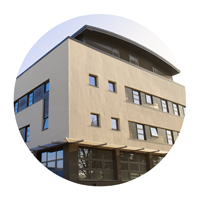In each of the financial years 2013-14, 2014-15 and 2015-16 (ie give figures for each year separately) please supply the following information:
Question 1) How many patients were a) medical b) surgical outliers – ie in a bed in another department’s ward?
The figures below show the number of patients and their associated specialty at the time of discharge. This cohort only includes patients who have an “Emergency” or “Elective” patient class. We have only included base wards that are included within the current 2016/17 Trust Bed Model. We have excluded all assessment areas as they will have a range of different specialties on the wards and not included in the Bed Model. As a result some ward specialties have changed over the last 3 years which has led to a higher number of outliers being reported in 2013/14 compared to later years.
An outlier has been identified as follows:
- Medical Outliers – any patient recorded as being under a Medical specialty but was discharged from a Surgical Ward
- Surgical Outliers – any patient recorded as being under a Surgical specialty but was discharged from a Medical Ward
Medical Outliers:
| Year | Outliers |
| 2013/14 | 4679 |
| 2014/15 | 3229 |
| 2015/16 | 2113 |
| Grand Total | 10021 |
Surgical Outliers:
| Year | Outliers |
| 2013/14 | 1400 |
| 2014/15 | 899 |
| 2015/16 | 723 |
| Grand Total | 3022 |
The Trust will always have more Medical Outliers than Surgical Outliers. Based on the figures above, the current ratio is approximately 9 Medical Outliers to 3 Surgical Outliers (3:1) per day over the last 3 years.
Average Medical Outliers over last 3 years (per day) = (10021/ 3)/ 365 = 9.15 ≈ 9 patients
Average Surgical Outliers over last 3 years (per day) = (3022/ 3)/ 365 = 2.75 ≈ 3 patients
Question 2) How many of these a) medical and b) surgical outliers were over the age of 65?
The figures below show the number of patients and their associated specialty at the time of discharge. This cohort only includes patients who have an “Emergency” or “Elective” patient class and are 65+ years old. The criteria and exclusions are the same as for Question 1.
Medical Outliers:
| Year | Outlier |
| 2013/14 | 2807 |
| 2014/15 | 2168 |
| 2015/16 | 1347 |
| Grand Total | 6322 |
Surgical Outliers:
| Year | Outlier |
| 2013/14 | 666 |
| 2014/15 | 487 |
| 2015/16 | 442 |
| Grand Total | 1595 |
Based on the figures above, the current ratio is approximately 6 Medical Outliers to 1 Surgical Outliers per day over the last 3 years (for patients aged 65 years or more).
Average Medical Outliers over last 3 years (per day) = (6322/ 3)/ 365 = 5.77 ≈ 6 patients
Average Surgical Outliers over last 3 years (per day) = (1595/ 3)/ 365 = 1.46 ≈ 1 patients
Question 3) How many patients were moved between wards during their stay a) 3 times b) 4 times c) 5 times or more? In each category, how many patients were over the age of 65?
The figures below show the number of patients who had 3 or more transfers and were aged 65 years old and over. The cohort has included any patient with more than 2 finished consultant episodes within their hospital spell and have been discharged from hospital.
| Transfers | 2013/14 | 2014/15 | 2015/16 |
| 3 Transfers | 4860 | 4118 | 4470 |
| 4 Transfers | 1372 | 1182 | 1326 |
| 5+ Transfers | 528 | 458 | 536 |
| Grand Total | 6760 | 5758 | 6332 |
Question 4) On how many occasions were patients moved between 8pm and 8am?
The figures below show the number of transfers and the times at which they happened. Only “Emergency” and “Elective” patients have been included in this data set. The data is only available from July 2014 onwards as the Trust changed the patient management system.
| WardHourMove2 | 2014/15 | 2015/16 |
| 20:00 – 07:59 | 70830 | 103152 |
| 08:00 – 19:59 | 164750 | 268889 |
| Grand Total | 235580 | 372041 |






